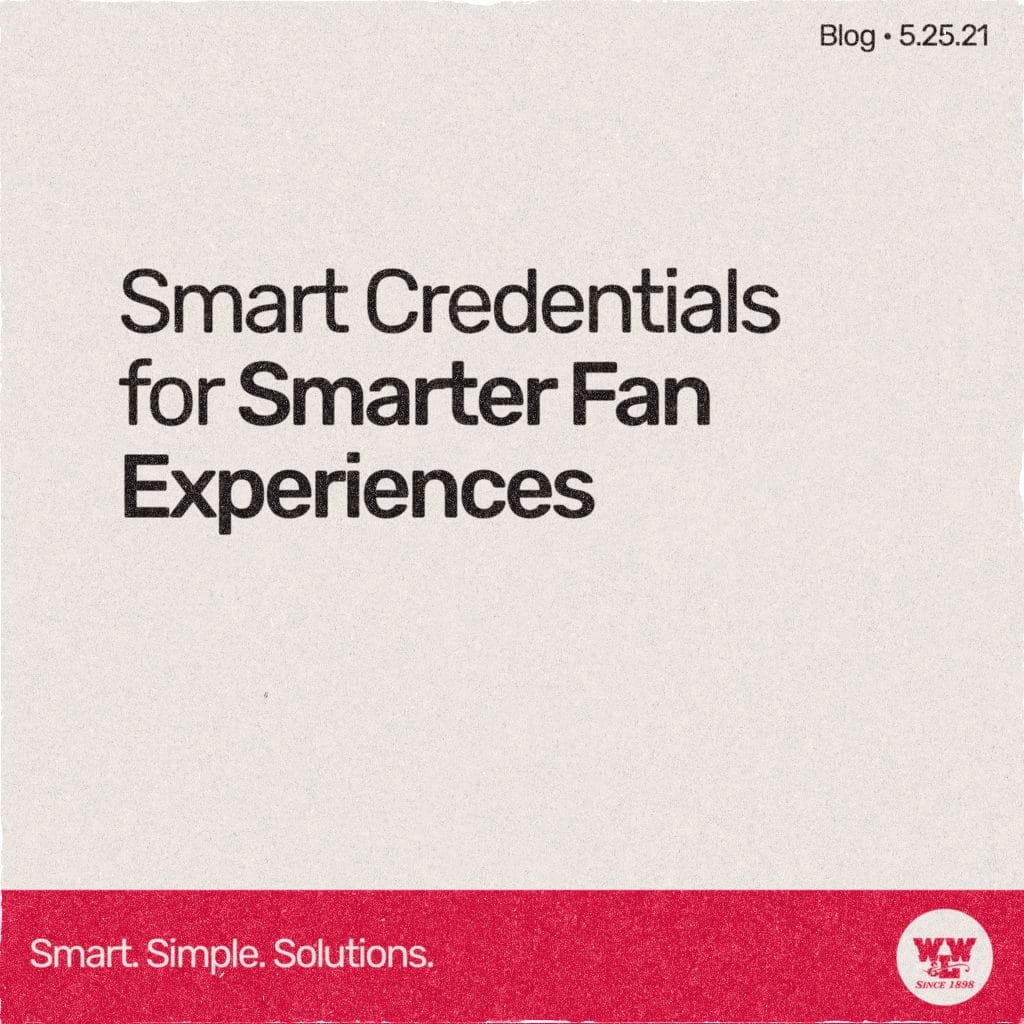Smart credentials for a smarter fan experience
Customers don’t just want to look like a VIP, they want to be treated like one. Upgrading your event’s or venue’s VIP credentials with RFID or UHF technology can increase the value you create for your attendees, sponsors, and yourself.
No one will ever admit that they want an eye-catching access pass to wear on a sponsor-branded lanyard at a festival, conference, or expo. Some people might even roll their eyes when they see the in-crowd walking around with them. But you know what? Give them one of their own to get around an experience worth having access to, and, sure enough, they’ll wear the lanyard all week and have it hanging in their office the rest of the year.
Designing event credentials is an unusually tricky balancing act. They have to serve a purpose, but they’re more than just a ticket. They can be a source of sponsorship revenue, but they can’t just be another place to splatter a bunch of logos that the wearer will ignore. The user should want to keep them, but they have to be more than just a piece of plastic bling.
Credentials have to provide value for everyone involved: the event, the user and the sponsors. They have to help control access, signify who belongs (both in a security and social context) and open doors – literally and figuratively – for an enhanced guest experience.
NFC and RFID technology can provide an instant upgrade to an event’s credentials.
It’s not much of a VIP experience if the VIP has to wait in a line, show a badge and have someone say “Yeah, you’re you. Come on in.” Too many everyday experiences are frictionless to let anything sticky happen at the velvet rope. Integrating NFC or RFID into a VIP credential allows for instant identity and access verification at entry points. Security or guest services personnel immediately know whether the person walking in belongs there or not and can greet them appropriately or direct them elsewhere.
Like other NFC or RFID applications in the event industry, these credentials provide valuable venue intelligence. The host or organizer will know each VIP’s activities around the event, allowing them to customize their experience and communications with each guest. This data can also be a valuable part of the event’s sponsorship inventory: whoever sponsors the credential can gain access to the data.
Sponsorship has to benefit the attendee as well as the event and the sponsor.
Like the event itself, the sponsor can learn from the information they glean to create exclusive benefits for the credential holder. These can be planned “money can’t buy your way in” experiences at the event, or follow-on benefits. For example, when a VIP receives their NFC-enabled credential, they can hold their phone next to it and view a personalized video greeting. That message can tell them to check back at the end of the event, at which point the sponsor can have another personalized video waiting for them with, well, whatever they want to offer.
The credential, then, becomes an ongoing source of engagement between the attendee, the event and the sponsor. The attendee wants to keep it, not just because it’s a good memory and a bit of a status symbol, but because it provides recurring value. The event and the sponsor, meanwhile, have a recurring source of interaction linked to a specific person. This gives them a way to continually refine their customer intelligence and product offering, which they can parlay into recurring revenue.
VIP credentials dangling on lanyards conjure up a mixed bag of impressions. Attendees need a real reason to want to wear them, other than letting everyone know they’re VIPs. Adding NFC or UHF technology to your event’s access credentials makes them a part of the experience, rather than just a way to get in. Schedule a chat with one of our specialists to talk through your smart credential program today!


